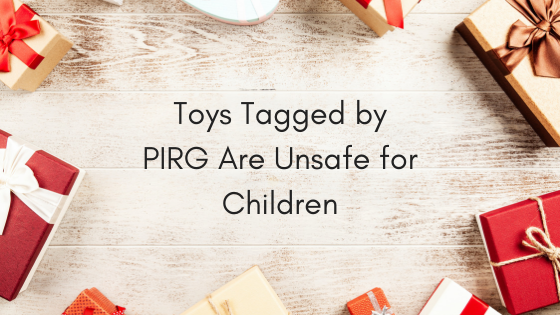We are going to divert this month from discussing living diseases afflicting children to instead focus on inanimate things that prey upon children: unsafe toys. No other months are these toys so prevalent than during the holiday shopping season.
In fact, U.S. Public Interest Research Group Education Fund (PIRG) recently released its 33rd annual “Trouble in Toyland” report which identifies dangerous toys available during this specific season. Toxic toys and those with privacy concerns top the list.
Over the past 30 years, PIRG annual reports have led to more than 150 recalls of unsafe toys and creation of other regulatory actions. This year PIRG continues to find dangers among some of the most popular toys in the country. (Click here for the full report https://uspirg.org/feature/usp/trouble-in-toyland )
“No one should worry about whether or not the toy they’re buying is toxic or dangerous. But in 2018, we’re still finding hazards in some of the most popular toys. Toy manufacturers must do better to ensure their products are safe before they end up in children’s hands and mouths,” said Adam Garber, Consumer Watchdog for U.S. PIRG.
Toxic Boron
So, what is the slimiest offender this year? Slime! According to the North Carolina branch of PIRG several types of ‘slimes’ on the market this year had toxic levels of boron, likely in the form of borax. How toxic? Reportedly up to fifteen times the European Union’s limit.
According to the US Environmental Protection Agency, ingesting boron can cause nausea, vomiting, long-term reproductive health issues and can even be fatal.
And what about the USA limit? According to PIRG, there are currently no limits on boron in children’s toys in the United States. PIRG has called for placing warning labels on products and a full public hearing to determine safe levels of boron.
Privacy Danger
Danger takes another form with the invasion of privacy issues. A toy? The PIRG report also highlights two smart toys — a robot toy and a tablet — with privacy concerns discovered by Mozilla Foundation investigation.
Every year, the potential for smart toys to expose private data becomes a more significant concern advises North Carolina branch of PIRG.
For example, PIRG reports that the robot toy has the capability to share information with third parties and may also sell information to advertisers. If parents decide to purchase a “smart” toy, they need to protect their children’s privacy.
Being aware of the toy’s controls is one way to protect your kids. Is there is an option to turn off those features of information sharing? Sometimes you can’t. Then you must consider how this information about your child can propose a potential security risk. That includes identity theft and a child’s habits being shared with advertisers.
(Both companies have publicly claimed that their toys do not share info with 3rd parties. )
Bad Balloons
NC PIRG also revealed results of a survey of five search pages for balloons sold on Amazon. No “choking hazard” labels were to be found on 87% of the latex balloons marketed to parents with children under the age of 2 years. This PIRG says is an apparent violation of law.
Sadly, among children’s products, balloons are the leading cause of suffocation death.
Innocent-looking toys can be as unsafe as dangerous looking ones. It is up to parent, grandparents and well-meaning relatives to do a little extra research when buying a toy for our kids. Places to check are the national websites of PIRG and The U.S. Consumer Product Safety Commission (CPSC)
Locally, check with the North Carolina Public Interest Research Group located at 19 W. Hargett St., Ste. 405, Raleigh, NC 27601 To contact with questions or if you would like to join PIRG in its battle to protect children call 919-833-2070.

